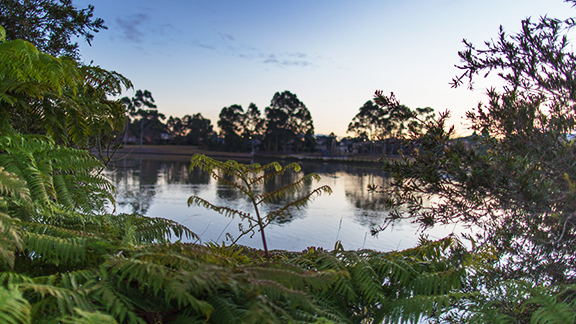Liverpool is home to a large variety of native plants and animals. We have important natural features including the Georges and Nepean Rivers, Chipping Norton Lakes and a huge bushland area at Holsworthy. There has been a history of major modifications to the natural habitats of Liverpool and we are faced with the ongoing pressures of a growing city such as habitat clearance, pollution, and noise.
Liverpool's biodiversity
Biodiversity is the variety of all living species, the genes they possess and the ecosystems and landscapes that make up our living world. Biodiversity is both our store of natural capital and a major contributor to ecosystem services. It provides all of our food sources, the clean air we breathe and fresh water we drink, biological pest control, inputs to soil fertility and structure.
Ecological Communities
An ecological community is a group of species that occur together in a particular area. Sixteen native ecological community types have been identified within Liverpool Local Government Area (LGA) and are estimated to occupy 10,700 hectares of the LGA.
Threatened species
Threatened species, populations and ecological communities are those that are listed under the Schedules of the NSW Biodiversity Conservation Act 2016 and/or the Commonwealth Environment Protection and Biodiversity Conservation Act 1999. They are considered to be at risk of extinction.
Liverpool LGA contains 10 threatened ecological communities, which are estimated to comprise approximately half of our remaining area of ecological communities. Of these, Cumberland Plain Woodland has undergone the most severe decline and is now listed as critically endangered under State and Commonwealth legislation.
Migratory Species
The Commonwealth Environment Protection and Biodiversity Conservation Act 1999 lists migratory species protected under a range of international conventions and agreements.
For more information please click the below links:


